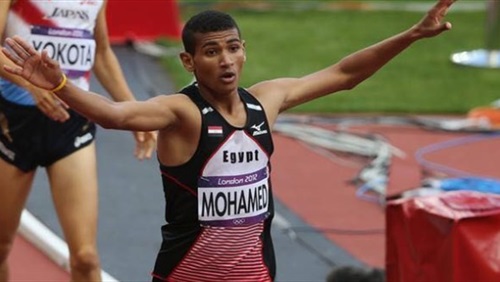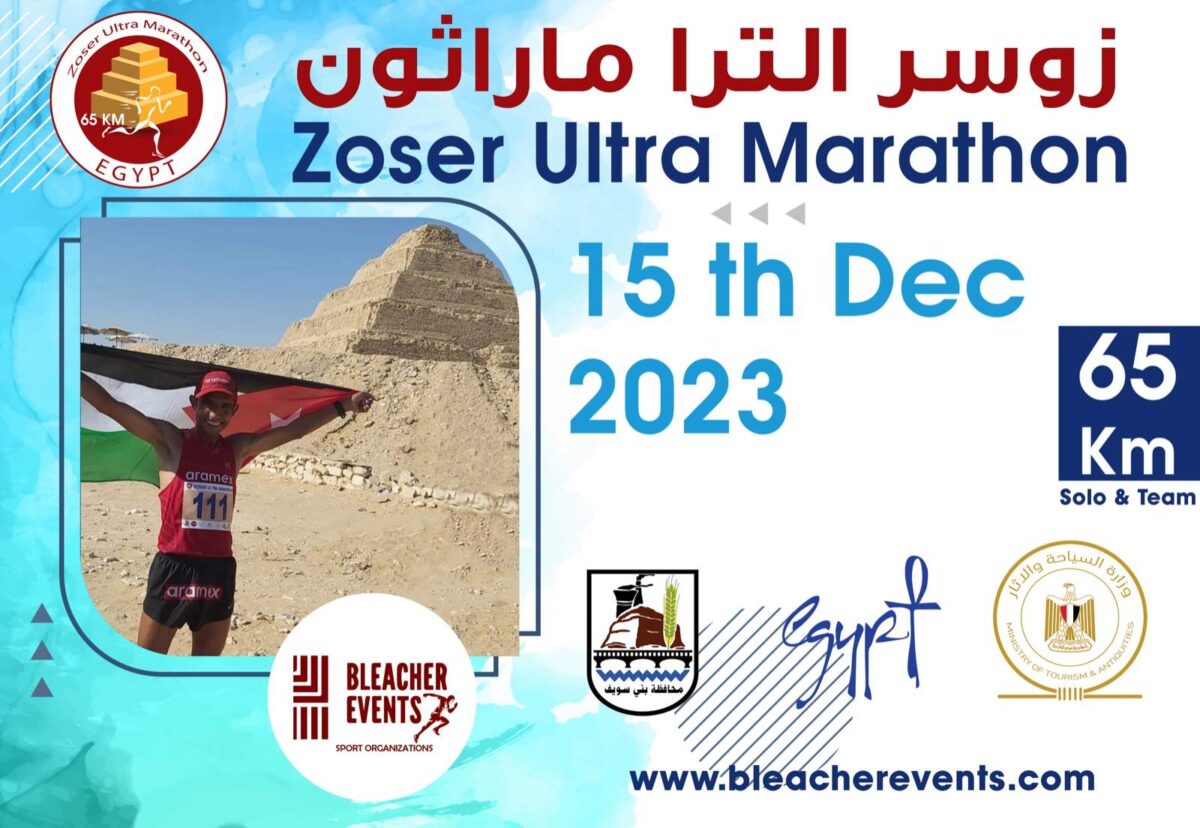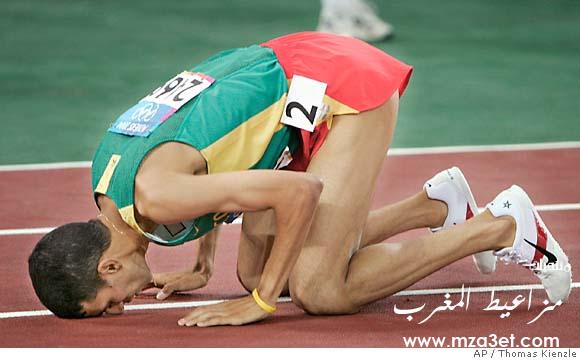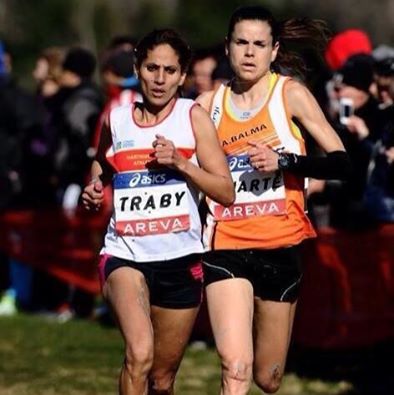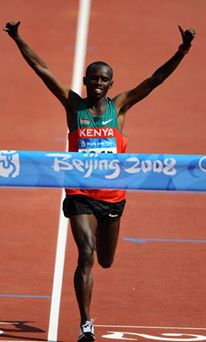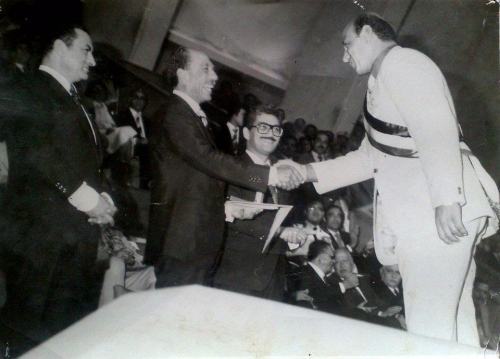Al-Ghussein II: The foundations of physical and physiological preparation for middle and long distance runners.
The opening research article / In the name of God, the Most Gracious, the Most Merciful
At the beginning of the conversation, it must be stated that the private coach is indispensable, as he is the one who watches you during training and competitions and tells you about your biomechanical defects in your running method or method.
In addition, it gives the player years of experience in competition, especially when the coach is a great champion.
Which is invaluable in addition to being the most capable person – with the player himself – in determining the program
The most appropriate training in light of the circumstances surrounding each player separately.
– We must first point out an important matter, which is not required that the player has grown up in one of the countries higher than the sea level by more than 2000 m, such as Kenya and Morocco – Ifrane in particular – and Ethiopia, Mexico and Peru ‘to be an Olympic runner of the elite category ( Elite Runner ) It is sufficient in the early stages of an athlete’s life to train at sea level, and after his progress at the significantly level and his ability to withstand strenuous exercises physically and mentally, he can go to training camps in Kenya, Morocco or Ethiopia for a month to three months before major competitions in order to increase the capacity and vision He has more and to increase the number of red blood cells in the blood of the athlete, in addition to the increase in what is known as the lactic limit of the athlete , so that he can run about 90 to 95 percent of the maximum level of oxygen without forming lactic acid in the lower end of the player and his body in general.This is what distinguishes great Kenyan runners such as runner / Patrick McCaw, the previous world record holder in the marathon in 3d, 3d, 2h, which was broken by the Kenyan Olympic champion / Wilson Kipsang, in the fortieth edition of the Berlin International Marathon 2013 AD,
He achieved (23 s, 3 d, 2 s.)
It is worth noting that the world record for the marathon in the men’s category was again broken by the Kenyan world champion, Denis Kimto, who won the forty-first edition of the 2014 Berlin International Marathon, achieving a time of two hours, two minutes and fifty-seven seconds.
Knowing that the experienced runner, if he was able to follow the sound scientific method in training – which we will show successively in most of the branches of the site with God’s help – can run with about 85 percent or more of the maximum level of oxygen in long-distance competitions ‘and these sports terms will be clearly shown later. .
As for the foundations for the physical preparation of long-distance runners.
It is necessary to start not paying attention to the players who are novices in practicing a sport that took place over longs. They understand the basis, and among them are those whose stardom dawns early in this sport to enter the professional sports championship sector.
And we start by talking about the most appropriate age. In many Arab countries, the age at which the practice of long-distance runs in a recreational manner is ten years, and in some European and foreign countries, such as Australia, it is eight years, provided that this age stage is preceded by the Practice of other less intense sports such as swimming, basketball or regular walking periodically, or gymnastics, or karate, etc…….’ by expert trainers to prevent injuries to the ascending children, whether in the bones or the spine.
Knowing that the practice of this sport with some seriousness was not done before thirteen years, as the Moroccan world sprinter / Hicham El Guerrouj did. 3 d ‘ inclination with a time of 43 s, 3 d ‘ 2000 m with a time of 24 s ‘ 4 d.
And entering into serious competitions is not before training for five years and at the age of fifteen, as did the Ethiopian runner / Kensia Bekele, the Beijing Olympic champion in 5000 m and 10,000 m, and the former world champion by penetrating the short suburb – 4 km during its establishment – and the long 12 km, he started in the tenth and competed in the fifth Ten for the first time, he finished fifth and won the first cross-country world championship at the age of nineteen.
From the above it is clear the best age to start this sport and the best time for sports competition. For the latter, this is not a mandatory rule. It is possible to start before the fifteenth, but the chance for the player to be exposed to what is known as muscle burning will be much greater. The player has practiced regular training for a minimum of two years with a sports background before that in other games such as swimming or football, for example, so as not to risk the player’s sports and health future.
Knowing that it is possible to start late in playing this game and reach the world, for example, the retired Egyptian international runner / Captain / Ahmed Abdel Mawgod, was practicing volleyball
By entering the army at the age of twenty, his talent was revealed and he started running regularly in a scientific manner at the age of twenty
And he became the champion of Egypt for several consecutive years in the 5000 m race and the 12 km long suburban breakthrough, in addition to being the holder of the Egyptian national record for the half marathon distance to date, which is 28 s 5 d 1 s. m and his personal marathon time is 37 s’ d 19, 2 hrs.
On the global level, the global feud / Jawad Gharib started relatively late
He was born in 1973 but in 2003 and 2005 he won two world championships in a row in Paris and Helsinki in the Marathon Marathon competition, and won the silver in the 2008 Beijing Olympic Games in the marathon final. London in 2009, and he came third behind the Olympic champion in Beijing, Kenya, / Samuel Kamo and Ansirwa, and behind the bronze medalist of the Beijing Olympic Games, the Ethiopian runner / Tsgai Kebede, who came second in the London Marathon in that version.
Hence, an early start is not required to achieve sporting excellence, and perhaps it is sometimes better, as the chance of injury to the player with what is known as muscle burn is reduced, as he has completed his growth and the athlete has become an independent personality with which it is difficult to force him to enter many competitions without a sporting need.
– There are some general notes for the athlete who has been running for more than two years
With regard to the 5000m distance, at least one week must pass as a positive rest between the two consecutive 5000m races, and the longer rest is better.
For a distance of 10,000 metres, positive rest must be for a period of at least two weeks, and we mean positive rest, recreational running without great effort, at least in the days immediately following the race, by stretches and light swedes. One day per mile before returning to serious training ‘Example: The athlete competes in an 8 km or 5 mile race
– The mile is one thousand six hundred and nine meters – then I am relaxed for five days, starting the first day after the race with at least twenty minutes and gradually increasing it for forty minutes on the fifth day, followed by good stretches and light swedes’ with the possibility of passive rest – that is, he does not play a regular sport. Ordinary rides – on the second day immediately following the race.
The basis of that rule is a minimum/rest day per mile of competitive running.
– As for the half marathon / about 21 km or 13 miles, I do not compete until after a month, even if I do not have a race close, then after thirteen days of positive rest, ‘of the thirteen miles – half marathon – I do normal training.
The reason for not raising the training load significantly after the positive rest days is if I have a nearby race because there is what is known as lowering the training load the closer we get to the day of the race, which for races from 3000m to 10,000 m from three days to four days is to reduce the load as for the half marathon for a full week at least . Here I am lower than the usual total distances Run a week without lowering the intensity ‘except for the last three days’ example of a professional athlete / to download a half-marathon race – first / the seventh important day (meaning a week before the race) / a long run an hour and a half or an 8 race – 10 km
The sixth day / a, I rested for 40-45 minutes if I ran a race, or from 45 to an hour if I did not compete and I was satisfied with the long training.
Fifth day / Run 15 minutes to twenty minutes warm-up and without stopping, I perform ten repetitions in three hundred meters the pace of the ten kilometer race and rest a minute, light or recreational jogging (ten in three hundred meters with a minute of jock) and then I do not stop and run from 15 to 20 minutes of relaxation, and then stretches and swede.
Fourth day / I ran 45 hours of leisure, stretches and Swedish after running, but with ease and comfort.
The third day / run, 30 minutes of relaxation and stretches only
The second day, I performed 20 minutes of recreation, and it is possible, according to desire, ten minutes, then four repetitions of 200m, at the pace of the race you will be running, with a rest of the 200m jock, and then ten minutes of relaxation, followed by light stretches.
The last day before the race / it is desirable to run 20 minutes of leisure and a good variety of lengths No
Exceeding 30 minutes at a leisurely pace only, without any Swedish of abdominal exercises, pressure, mindfulness, etc. to moderately relax all the muscles of the body.
Race day / – Warming up for the race – as explained by one of the Egyptian international athletes – I ran ten minutes in hot weather and fifteen in cold weather. I was relaxing and in the last two minutes of the indicated time, I would raise the pace, ie the speed so that your body warms up and prepares for the race, then I walk and raise your leg from the knee alternately then the whole of your foot after that try to extend your arm in front of you and touch the tips of your toes while raising them alternately also after that move your arm as if you were running back and forth and then make the heels of your foot touch the buttocks if possible in an alternating motion and gradually increase the speed for a distance of fifty meters and then walk back
All this in ten minutes, after that I walk a little and catch your breath for a maximum of five minutes and then run three to five quick starts for a distance of 50 meters and gradually increase the speed and come back walking after this I walk to the car or someone with you and start taking off the warming clothes and go to stand on the starting line in front – Five minutes before the start, and I prefer to jump lightly and low in the place every little while because your body will not cool down especially in the cold winter – if you are ready to compete for the first places until about twenty, so that the rest compete in the start so that you can be relieved of them – that is, they separate from you early – and fasten your shoes well before the race.
The warm-up must be started according to the previous one within 45-50 minutes before starting, ‘for the novice runner or returning from an injury. As for the old runner, he can do this in thirty minutes, after which he is standing on the starting line.
With an indication that the conception of pregnancy in the last three or four days in the previous example / can be done for the athlete who is preparing to run 3000 m and up to 10000 m.
As for the marathon – 2’26 miles – rest from three to four months before running another marathon at least, but it is better not to run more than two marathons in one year” with the rule of one day rest for each mile of competition before returning to serious training and then the athlete needs six Twenty days of positive rest before returning to serious training after the marathon.
As for the basic pillars in which the science of long-distance training is built and with which the hero is formed
There is what is known as long-distance running or general endurance
– There is what is known as carrying speed, and it has several training patterns, which are the lactic end or tembo run , which is a Swedish word that means fast fun, and hills ran.
There is what is known as speed training, and the two most important types are max VO2 training and fast track interval training (repetitive training or the Kenyan method).
In addition to strengthening the body as a whole, it is divided into Swedish exercises, training with weights (country iron and devices), medical ball exercises and Swiss ball.
– First pillar / general endurance /
It is the basis of physical training for the long-distance runner, and for a start, the time of the long-distance runner’s exercise should not be less than forty-five minutes and not more than three hours for a marathon runner.
The pulse should not be less than 75 percent of the maximum heart rate during and immediately after training when measuring the pulse, and no more than 85 percent of the maximum heart rate as well, as the Moroccan Olympic champion Said Aouita said, “It is preferable to run on dirt ground or flat grass.”
As for how to measure the pulse as indicated above, it is measured as follows / The age is subtracted from 220
Then after that we see the pulse after the exercise and measure its percentage of the product of the subtraction ‘Important example / a twenty-year-old player performs the subtraction of the age from two hundred and twenty (20-20 years equals 200)
Then from this final output, I measure the pulse level that the athlete is running on. For example, a player after an exercise finds his pulse of 150 beats per minute. If by calculating the percentage of the athlete’s pulse out of the two hundred (150 multiplied by one hundred over two hundred), it will be 75 percent of the maximum pulse.
The question is: How do I measure the pulse after training?
After a final run, and during the walking minute immediately following the end of the training, I put my index and middle fingers on the neck below the chin on the right side, or hold the wrist of the left hand and count the pulses for six seconds, then multiply the number by ten ‘example / after running and by measuring the pulse as indicated above
Within six seconds, it turns out that the pulses are fifteen, so multiply them by ten – to complete the minute –
15 x 10 equals 150 beats per minute out of 200. If I am 20 years old, the percentage when calculating is 75 percent of the maximum pulse, which is appropriate for general endurance runs as a minimum training intensity with the possibility of raising the rhythm to eighty-five percent as a maximum for general endurance training.
The athlete must know that the general endurance run must be at least twice to three times a week, unlike other training patterns such as speed endurance, speed training and positive comfort represented by recreational running, which must be included in the training system over the weeks and months of training.
Knowing that there is a day when a long distance is run, usually Friday morning at the end of the weekly training program, and this distance is an increase of half to twice compared to the distance that the athlete usually runs as a general endurance example/ an athlete runs a general endurance, usually 12 km per hour and then runs from 18 km to 24 km on a long ran day to develop muscle skin and lung capacity, to raise the efficiency of the circulatory system in general, and to lose extra kilograms of the ideal weight for a runner
And God ‘s advice to get the best possible benefit for your long run is to apply the following, for example, if you have Friday or Sunday – the official holiday – long distance training for a distance of 24 km, then run the first 12 km at the usual and comfortable speed in the range of 70 to 75 percent of the maximum pulse then raise the speed at which you run – or the pace – to become the same as your racing in the marathon or half marathon if possible, especially in the last quarter – that is, the last six kilometers – if
12 km normal, then 6 km the pace of the marathon, and the last 6 km, the pace of the half marathon.
The most important question now is / How do I determine my speed by running the long distance in order to run within the limits of the required pulse?
The answer is / if I am a beginner athlete, I must play a race of 8-10 km and know my personal number.
So, what is required is an important example: a runner has a distance of ten kilometers for 40 minutes, for example
This means that the two will travel a kilometer – 2 km – during the race in eight minutes, ie 8 times 5 will equal 40 minutes.
And then when he performs a general endurance exercise in training, he must add from one and a half to two minutes’ to the previous rhythm at a rate for every 2 km he performs, ie a running allowance for example / 12 km every 2 km
For eight minutes, he runs them on nine and a half (30 sec. 9 d) to ten minutes, and in any case no more than two minutes and twenty-five seconds in proportion to every 2 km of his personal time in the race .
And this is a general rule, if the athlete is a champion and runs the ten kilometers in thirty minutes (30 minutes).
The long run is as follows: seven and a half to eight minutes for every 2 km. He runs them in a sixteen-kilometre exercise, for example.
As for raising the pace in the other half of the exercise, it takes a year to pace the marathon.
Or a half marathon (especially in the third or fourth quarter). So it will be as follows: Please focus with me , to know the pace of the marathon and the half marathon, which is supposed to be conducted in the second half of the long general endurance training, and the general endurance exercises in general.
It follows, God willing / knowing that all articles and sports topics related to the Pharaohs runners will be on the main sports site before you as soon as you read that article and without any financial compensation, with the subject of this scientific article to the Egyptian Intellectual Property Protection Law because the site is owned by an Egyptian and designed by an Egyptian company in order to protect our rights In order to preserve the rights of our valued visitors to obtain useful information without any potential exploitation ***
*** Follow by the grace of God /
If you set the pace for the half marathon, then I see my personal number for the half marathon, and then I run the same rhythm, Eli by running the race, for example / an athlete who has a half marathon in an hour and twenty -four minutes, then runs the kilometer in four minutes (4 min/km) and then in general endurance training I run the second half or the last quarter, so that I cross the kilometer in four minutes and continue to do so until the end of the training.
But if I only have a personal number in the 8 km – 10 km race, I will increase it from fifteen
To twenty seconds for every 2 km of the race’s pace. For example, I have thirty-five minutes (35 minutes) in ten kilometers, that is, cutting two kilometers in seven minutes. If the two perform a kilometer on seven fifteen to twenty seven and possibly seven thirty (20 ‘7 d’ 30 ‘7 d) in the latter
A few kilometers in a long general endurance training. If you were an international runner, you could only provide 15 seconds.
As for the marathon pace / if I have a personal number for the marathon, I try to run the same speed in the second and last half of the general endurance training example / a player has two hours and forty-eight minutes in the marathon and then runs the amount over four minutes (4 min/km) in the general endurance exercise example / I ran I run 24 km in the first 12 km, with an increase of about a minute and a half from the marathon pace every 2 km – ie run (30 seconds’ 9 d every 2 km) and the last 12 km I gradually increase the speed to become the same pace of the marathon ie 2 km in 8 d.
– As for if I don’t have a personal number except for 8 km – 10 km, then the time will increase by (forty to fifty seconds approximately ), and we mean if my personal number is in ten kilometers (forty minutes) 40 minutes, for example, then every two kilometers runs in eight minutes (8 D) The approximate pace of the marathon is increased from 40 to fifty seconds, and every 2 km is run on a 40’8 d to 50.8 d in the second half of the general endurance training.
With regard to elite runners specialized in the ten kilometers, the half marathon in Fiesido is run approximately 34 to 35 seconds, at a rate of every 2 km from their personal number in the ten thousand meters, so that this is the rhythm of the marathon that the hero is supposed to run in training and in the race with God’s help. Example / runner from World class Bronze level supposed number in 10 km
30 sec, 29 d, in the half marathon 4 d “an hour” and in the 16 d’ marathon, two hours, here is the increase in the marathon pace over the ten-kilometre pace about 34-35 seconds at a rate of every 2 km (refer to the last paragraph RoAD RACE LaBELS 2011 REGULATINS IAAF
Finally, with regard to the athlete who has not practiced any sports activity before, he must do a comprehensive medical examination at first. As for the athlete who wants to run the marathon, especially the amateur, he must take a medical test called ( the stress heart test ), and in general if you do not have personal times yet, endurance year until you reach an appropriate level of Physical fitness that enables you to take a test run for a distance of km, in accordance with the principles and sports systems set out in advance, and the most important thing we would like to say is to enjoy running and sports exercises in general to ensure the continuity of that sport loved by all, and good luck ***


